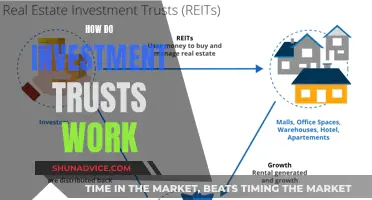
Investing in real estate can be a great way to generate passive income, but it requires careful planning and management. Here's an introduction to the process of buying an investment-owned house.
First, it's important to understand the different types of investment properties. These can be residential, such as single-family homes, townhouses, or condominiums, or commercial properties like hotels, restaurants, or retail shops. Investors can choose to rent out these properties or renovate and resell them, known as house flipping.
When considering an investment property, it's crucial to assess your financial stability and the potential return on investment (ROI). Lenders typically have stricter requirements for investment properties, with higher down payment and credit score expectations. Maintenance costs, property taxes, and homeowners insurance are also significant factors to consider.
Additionally, investing in real estate requires time and effort. As a landlord, you'll need to manage tenants, handle repairs, and stay up-to-date with local landlord-tenant laws.
Before purchasing an investment property, it's recommended to get pre-approved for a mortgage loan, research the market and location, and carefully analyse the potential costs and returns.
In summary, buying an investment-owned house involves a combination of financial planning, market research, and ongoing property management to ensure a successful and profitable venture.
What You'll Learn

Secure financing
Securing financing for an investment property can be a complex process, and it's important to understand the various options available to make an informed decision. Here are some detailed instructions on how to secure financing for an investment-owned house:
Step 1: Understand the Different Financing Options
Before seeking financing, it's crucial to familiarize yourself with the different options available. Traditional mortgages, such as conventional bank loans, are a common choice for those looking to invest in real estate. These loans typically require a higher down payment, often 30% or more, and have specific credit score, income, and asset requirements. Hard money loans are another option, offering short-term, high-interest funding based on the property's after-repair value, often used for property flipping. Private money loans are provided by individuals, such as friends or family, and should be carefully considered due to the potential impact on personal relationships. Home equity loans allow you to leverage the equity in your existing home to finance your investment. Commercial loans are also an option for those investing in multi-unit residential or commercial properties.
Step 2: Assess Your Financial Situation
Before approaching lenders, it's essential to evaluate your financial stability and ensure you can cover the costs associated with the investment property. Calculate your expected rental income, taking into account similar properties in the area, and estimate your net operating income by subtracting annual operating expenses, including maintenance, taxes, and insurance. This will help you determine if the investment is financially viable and provide an understanding of your ability to secure financing.
Step 3: Compare Lenders and Their Requirements
Different lenders will have varying requirements for investment property loans. Compare multiple lenders and understand their specific criteria, such as credit score, down payment amount, income, and existing debt obligations. Most lenders will require a higher down payment, often starting at 15%, and may also expect you to demonstrate financial stability through steady income and low debt-to-income ratios.
Step 4: Get Pre-Approved for a Mortgage
Getting pre-approved for a mortgage will give you a clear idea of how much funding you can access. This process involves a thorough assessment of your financial situation, including a hard credit check and verification of your income and assets. A pre-approval will strengthen your position when making offers on investment properties and show sellers that you are a serious buyer.
Step 5: Choose a Suitable Loan Option
Consider the specific loan options available to you based on your financial situation and the property you wish to invest in. If you already own a home, you may be able to use the equity in your current property as security for the investment property, either through a home loan top-up or a supplementary loan account. If you don't own a home, you'll need to save for a deposit, typically at least 5%, and be prepared to prove your income and expenses.
Step 6: Understand the Costs and Risks
Investing in real estate carries certain risks and costs that you should carefully consider. Be mindful of interest rates, which tend to be higher for investment properties, and factor in additional expenses such as stamp duty, solicitor's fees, and lenders' mortgage insurance if your loan-to-value ratio is high. Remember that investing in property can be a long-term commitment, and ensure you have the financial capacity to manage the extra repayments and costs associated with the investment.
Step 7: Consult Professionals
Throughout the process, consider seeking advice from qualified professionals, such as real estate agents, mortgage brokers, and financial advisors. They can provide valuable insights into the market, help you navigate the complex world of investment property financing, and ensure you make a well-informed decision.
Securing financing for an investment-owned house requires careful planning, financial stability, and a thorough understanding of the available options. By following these steps, you can increase your chances of successfully obtaining the funding needed to pursue your investment goals.
Federal Retirement Thrift Investment Savings Plan: Maximizing Your Retirement Benefits
You may want to see also

Choose property type and location
Choosing the Right Property Type and Location for Your Investment
The location of your investment property is one of the most important factors in determining its success or failure. Here are some key considerations to help you choose the right property type and location:
Property Type
- Urban, Suburban, or Rural: The first decision is whether to invest in an urban, suburban, or rural property. Urban properties are located within cities, while rural properties are out in the country. Each type has its own advantages and disadvantages, and you should consider factors such as climate, demographics, scenery, and surrounding establishments.
- Single-Family or Multi-Family: Single-family homes tend to attract longer-term renters and are often seen as a more stable investment. On the other hand, multi-family homes, such as condominiums, offer lower maintenance due to external repairs being handled by a condo association.
- New Construction or Existing Property: New constructions offer customisation and modern amenities but come with risks like delays and increased costs. Existing properties provide faster access, established improvements, and often lower costs.
Location
- Financial Stability: Look for locations with a stable economy, low unemployment rates, and signs of growth in real estate values. This indicates a healthy market with potential for higher rental income and long-term returns.
- Access to Amenities and Transportation: Desirable locations offer convenient access to amenities such as grocery stores, restaurants, parks, and public transportation. These factors not only make the property more attractive to potential tenants but also positively impact its value.
- Crime Rate and Safety: Choose a location with a low crime rate and a safe, inviting atmosphere. This is an important consideration for tenants and can significantly impact the success of your investment.
- Proximity to Educational Institutions: Consider the quality of schools in the area, especially if you're targeting family-sized homes. Good schools can attract families and impact the overall value of your investment.
- Employment Opportunities: Locations with growing employment opportunities tend to attract more tenants. Look for areas with diverse and strong economies, as these can indicate a healthy rental market.
- Development and Infrastructure Plans: Research any upcoming developments, such as new schools, hospitals, transportation, or commercial projects. These can positively impact property values and rental demand.
- Scenic Views and Sustainability: Visually appealing locations, with access to nature, greenery, or water bodies, tend to be in higher demand. Additionally, consider implementing sustainable and climate-friendly measures to attract environmentally conscious tenants.
- Rental Demand and Community: Choose an area with high rental demand, such as college towns or locations with job growth. Also, consider the presence of a friendly and diverse community, as this can encourage tenant retention and create a desirable neighbourhood.
Remember, each location is unique, and it's important to weigh these factors based on your specific investment goals and the type of tenants you want to attract.
Investing in People: What's the Risk?
You may want to see also

Understand the market
Understanding the market is crucial when considering buying an investment-owned house. Here are some key insights to help you navigate this market:
- Market Trends: The share of investor-owned homes has remained high in recent years, with investors accounting for around a quarter of all single-family home purchases. There was a surge in investor activity in 2021, and while it has declined slightly since then, there is no indication that it will return to pre-pandemic levels anytime soon.
- Geographic Factors: The Sun Belt markets, including states like Texas, Florida, Georgia, and California, have seen significant investor activity. These regions experienced higher price increases for detached homes compared to the national average. Other states with a high percentage of investor purchases include Arizona, Nevada, and New Mexico.
- Investor Profile: The typical investors in the current market are smaller investors who own fewer properties (3 to 9). Mega-investors and large investors, who own 1,000 or more and 100 to 999 properties respectively, have shown muted activity in recent quarters.
- Investment Strategies: Investors are often attracted to lower-cost homes, particularly in areas with strong rent and population growth. They aim to acquire properties at a low cost and either hold them or rent them out. This strategy, known as "house flipping," involves a short holding period with the intent of selling for a quick profit.
- Financial Considerations: Investment firms have greater financial advantages than individual buyers. They can access more capital at lower interest rates, allowing them to pay higher prices for homes. Additionally, their rental income makes them cash-rich, enabling more attractive cash offers to sellers.
- Market Impact: There are concerns that investors are driving up costs and reducing the availability of homes for regular buyers. However, a recent study found no evidence that single-family REITs (companies investing in single-family properties) crowd out residential homebuyers or increase home prices.
- Legislative Landscape: Several states and cities are proposing or implementing legislation to address the impact of investors on the housing market. These include attempts to limit investor purchasing power, impose taxes on selling transactions, and provide assistance to first-time homebuyers.
Fees, Funds and You: The Cost of Investing
You may want to see also

Research and analyse
Get your finances in order
Before you start looking for a property, you need to get your finances in order. This means figuring out how you will finance the investment, whether that's through a mortgage, cash, or another method. Review your financial situation and ensure you have enough money saved for a down payment and to support yourself for at least six months.
Choose a location
Location is a major contributing factor to the success of an investment property. Look for areas with high rental demand, such as those with universities, specific employment industries, or vacation spots. Conduct a real estate market analysis to identify profitable locations.
Research investment strategies
If you're a beginner investor, consider starting with basic strategies such as traditional rentals, turnkey investment properties, or buy-and-hold real estate. More experienced investors can explore riskier options like fix-and-flip, REITs, or commercial real estate investments.
Define your criteria
Decide on the size, number of bedrooms and bathrooms, and amenities that your rental property will need to make you a profit. Also, determine your budget and look for properties that fit within that range.
Conduct online research
Use real estate websites to search for investment properties that match your criteria. Create a list of your top choices that meet most, if not all, of your criteria.
Conduct comparative market research
Compare your favourite properties to similar ones in the same location to ensure you're getting a reasonable price. This analysis will help you choose the property with the highest potential returns.
Analyse the property's potential
To find the best investment, calculate the property's potential returns using metrics such as cash on cash return, capitalization rate, and expected rate of return.
Annuities: A Secure Retirement or a Trap for the Unwary?
You may want to see also

Get an inspection
Getting an inspection is a critical step in the process of buying an investment-owned house. While it may seem like an additional expense, the cost of forgoing an inspection can be far greater in the long run. A professional inspector will be able to identify issues that you may overlook, such as problems with the foundation, plumbing, or structure. These issues can be costly to repair and may even cause you to back out of the purchase if they are severe enough.
In some states, investment property owners who plan to rent out their properties are required to have them inspected and cleared by inspectors before tenants move in. Even if it is not mandatory in your area, it is still highly recommended to get an inspection. This will help protect you from unknowingly purchasing a property with significant defects.
When hiring an inspector, look for one who is experienced and thorough. They should examine both the exterior and interior of the property, including electrical, plumbing, roofing, HVAC, and foundations. Be sure to ask the inspector what is and is not covered in their inspection, so you know what additional inspections may be needed. For example, you may need to hire a separate pest inspector to check for termite damage.
The cost of a home inspection can vary depending on factors such as the size and age of the home and the location, but it typically ranges from $300 to $500. While this may seem like a significant expense, it is a worthwhile investment to protect yourself from costly repairs down the line.
Keep in mind that the inspection is not just about finding problems with the house. It is also about giving you, as the buyer, the information you need to make an informed decision about the property. The inspector will produce a report detailing their findings, which you can use to negotiate with the seller or plan for future maintenance and repairs.
Mortgage or Market: Navigating Your Finances in a Recession
You may want to see also
Frequently asked questions
An investment property is real estate bought to generate income through renting or reselling. Investment properties can be residential, such as single-family homes, or commercial, such as hotels and restaurants.
You can finance an investment property with a mortgage, but the requirements are stricter than for a primary residence. You'll need a larger down payment, a higher credit score, and a lower debt-to-income ratio. Alternatively, you could buy a property with cash or use money from your IRA.
A well-chosen investment property can provide a steady income and build equity. However, it's a significant commitment of time and money, and there's a risk of losing money if you can't find tenants or the property needs expensive repairs.
Look for a property in a desirable location with low property taxes, good schools, and amenities within walking distance. Consider the type of property (single-family home, condo, etc.) and whether it's likely to attract reliable tenants.







